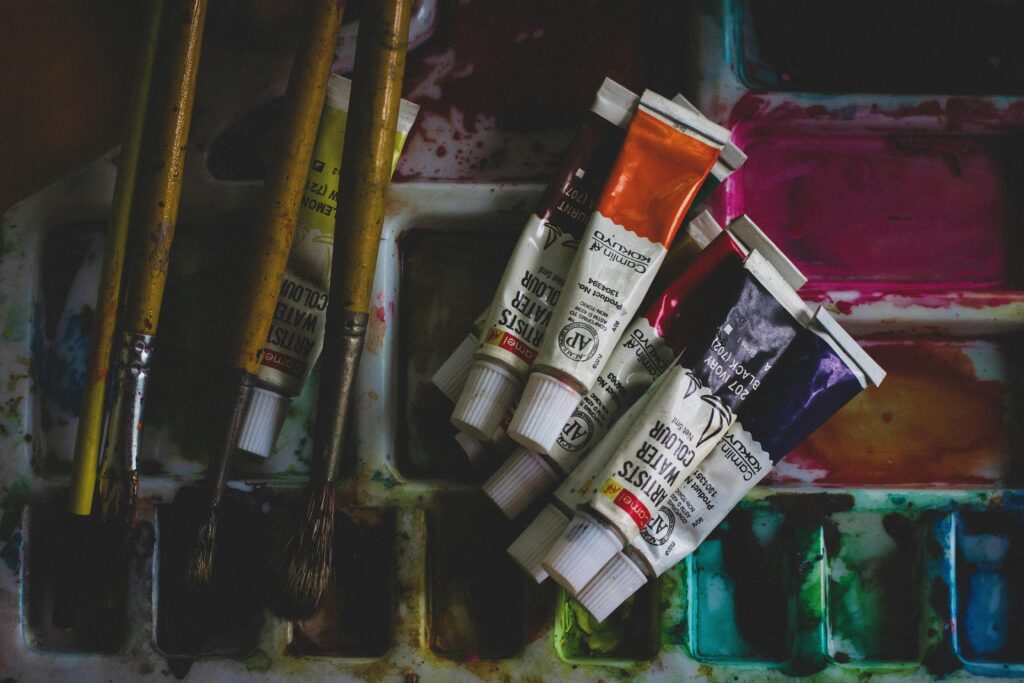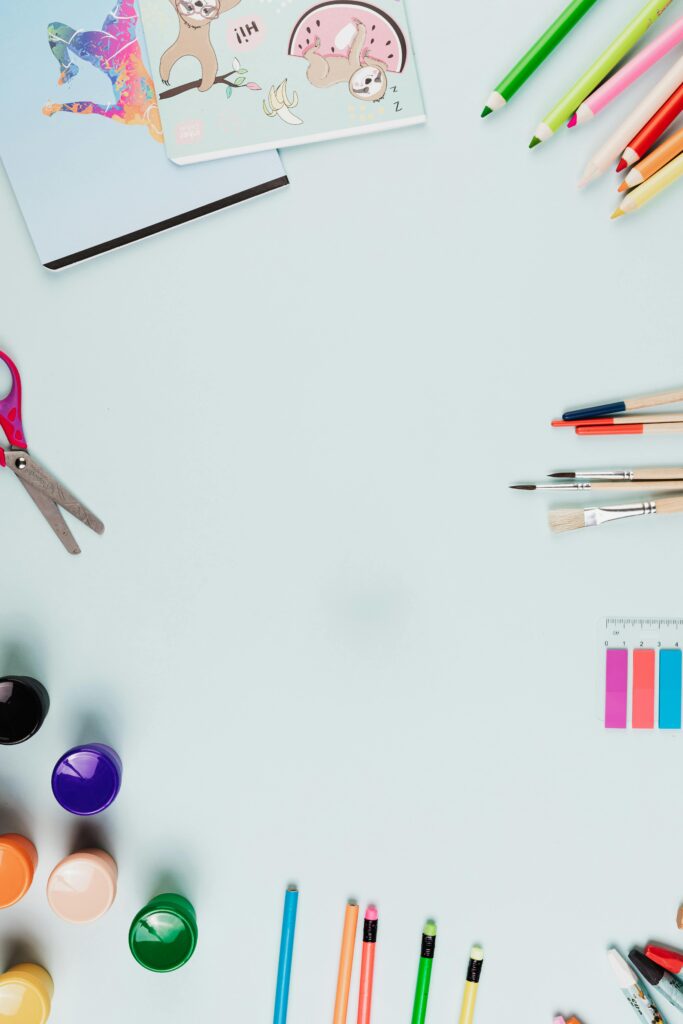Is There a Reason Women Artists Still Earn Less?

The gender gap is real. You’re not overthinking it. If you’ve ever looked around at an exhibition lineup or flipped through an art fair catalog and quietly wondered why there are still so few women, your instinct was right. The numbers back it up, and they’ve been doing so for years. But understanding how to read those numbers is where things start to get really interesting.
Art market reports love clean charts and polished graphs, but behind those visuals are messy truths. They show that for every celebrated female artist, there are hundreds whose names never reach a gallery wall or an auction list. They show that price gaps persist even when talent levels don’t. And they quietly confirm that visibility in the art world is still something women have to fight for more than men.
What’s tricky is that reports rarely spell it out. They present data like facts, stripped of emotion or history, as if the imbalance happened by accident. But if you know how to look closer, how to ask the right questions, you start to see the story underneath: who’s being promoted, who’s being overlooked, and how that shapes the market’s perception of value.
Reading gender data is realizing that every percentage point is connected to access, to opportunities given or denied. It’s about noticing patterns across galleries, fairs, and institutions, and asking why they still exist. Once you see those connections, it’s hard to unsee them.
For artists, collectors, and anyone working in the creative field, learning to read this data is like getting a behind-the-scenes look at how the art world really runs. It’s not just information, it’s awareness. And awareness is the first step toward change.
In this article, we’ll break down what those reports actually mean, what they leave out, and how to use that knowledge to navigate, question, and challenge the structures that still define who gets seen, and who doesn’t.

What Those “Market Share” Numbers Really Mean
When you see that women make up only 10% or 15% of total auction sales, it can sound like a small detail, but it’s anything but. That number isn’t just about sales, it’s about visibility, credibility, and the long-term recognition that determines who ends up in textbooks and museum collections. Those percentages reveal the lasting ripple of whose work is being circulated, collected, and remembered.
The art market is built on momentum. Once an artist’s work starts selling for high prices, it becomes self-perpetuating. More galleries want in, more collectors bid, and institutions follow suit. So when women only occupy a small slice of the pie, it’s not because there’s a lack of quality, it’s because fewer doors are opening in the first place.
Market share data, then, isn’t just a reflection of what people buy. It reflects what people see. If galleries aren’t showcasing women, collectors don’t bid. If collectors don’t bid, institutions don’t collect. It’s a cycle, and that cycle gets reinforced every time a report presents the data without asking why it looks that way.
When reading those percentages, ask: who gets access to high-value markets, and who’s being left out? How many of the most expensive artists are men? What kind of visibility led them there? The data won’t say it outright, but patterns will.
Learning to interpret these figures through that lens transforms a static report into a story about representation. It’s not about memorizing numbers; it’s about questioning systems. When you start reading that way, you stop feeling disheartened by the data and start feeling empowered to understand it.
And that understanding matters. Because the art world changes only when people start naming the gaps, not just noticing them.
Why Auction Prices Don’t Tell the Whole Truth
Auction results might look like hard facts, but they only show a fraction of what’s really happening in the market. They focus on resale value, not the thousands of artists actively producing and exhibiting work. When a report says that 90% of auction sales go to male artists, it doesn’t mean women aren’t creating, it means their work isn’t circulating through those same high-value resale systems yet.
Many female artists sell directly to collectors, work through smaller galleries, or thrive in alternative spaces that never make it into those glossy reports. Their sales are real, their audiences are real, but because the data isn’t tracked, it’s invisible in the larger market conversation. So when people claim the data shows “what collectors want,” that’s not entirely true, it’s showing what’s being offered to collectors in the first place.
Auction value is also shaped by legacy. The artists commanding millions today often built careers decades ago, in times when women were rarely given equal opportunity or exposure. So when you see those price disparities, you’re not just looking at money, you’re looking at history repeating itself in economic form.
This doesn’t mean the numbers are meaningless. It means you should read them in context. Ask: whose work is being resold? How many years of institutional recognition came before those prices rose? Who was left out of those systems entirely? Those questions add depth to what would otherwise look like a static statistic.
The real story isn’t that women’s art sells for less. It’s that women’s art has been systematically excluded from the systems that build long-term market value. Once you understand that, the data becomes less discouraging and more revealing. It shows exactly where the art world still needs to grow.
And the best part? More galleries, fairs, and collectors are finally paying attention. Awareness is shifting, and understanding the data helps fuel that change.
How Gallery Representation Skews the Picture
If you’ve ever wondered why the same handful of names appear across major exhibitions and reports, it’s often because gallery representation drives the market conversation. The data tends to spotlight artists represented by blue-chip galleries, and historically, those rosters have been overwhelmingly male. When women aren’t represented, their work simply doesn’t make it into the datasets that shape “market trends.”
Gallery representation is like a gatekeeper. The right gallery can elevate an artist’s visibility overnight, while lack of access keeps equally talented artists invisible. So when you see gender disparities in market data, what you’re really seeing is the result of unequal representation pipelines, not unequal talent or effort.
Reading this kind of data well means looking for patterns in who gets shown, not just who gets sold. How many female artists are part of gallery exhibitions? How many are given solo shows? What’s the split between men and women in emerging versus established artist rosters? Those numbers often reveal where change is actually happening, and where it’s just being marketed.
It’s also important to remember that representation isn’t just about being “included.” It’s about being supported. Do female artists receive the same marketing push, publication budgets, and collector outreach? Often, the answer is no. That affects everything that comes after, from auction prices to museum acquisitions.
Once you start paying attention to this level of detail, data turns into advocacy fuel. It stops feeling like an abstract chart and starts feeling like a call for accountability. Representation data tells us not just who’s selling, but who’s being given the chance to.
And when you read reports that way, you start to notice where the gaps are, and where progress might finally be taking root.

The Invisible Work Behind the Numbers
For every artist whose name shows up in a report, there are hundreds whose work quietly supports the ecosystem from the edges. Think about the countless women who teach, curate, assist, organize, and create without their contributions ever being captured in “market” data. That invisibility skews how we understand the creative landscape, and makes it look narrower than it actually is.
Reports rarely track the community work, mentorship, and unpaid labor that sustain the art world. But that labor often shapes who gets opportunities later. When you read gender data, keep that in mind: it’s showing economic outcomes, not the creative ecosystem in full.
This gap is why context matters so much. A woman running workshops or mentoring younger artists might not appear in any sales data, but she’s shaping the next generation of creatives. The same goes for women building collectives, leading smaller galleries, or pushing for more inclusive programming.
When we fail to account for that kind of contribution, we unintentionally treat “visibility” as the only marker of value. But the art world runs on far more than what’s bought and sold. It runs on collaboration, teaching, and shared creative energy, most of which doesn’t show up in charts.
So when you’re reading an art market report, ask what’s missing. Who is influencing the culture even if they’re not being measured? Who’s setting the tone for creative progress without the numbers to prove it?
Because understanding what the data doesn’t include is just as important as understanding what it does.
Turning Data Into Empowerment
Reading art market data doesn’t have to be depressing. Once you know how to interpret it, it becomes a powerful tool. You start recognizing patterns, understanding barriers, and seeing where new opportunities can be built. Awareness leads to agency, and agency changes how artists, curators, and collectors approach their roles in the system.
For artists, this knowledge helps you strategize. You begin to understand where visibility matters most, where underrepresentation is shifting, and how to align your career moves with growing spaces of inclusion. You stop comparing yourself to impossible benchmarks and start identifying the environments that actually value diversity.
For curators and galleries, it’s a chance to audit your own data. Who are you showing? Whose voices are missing? Instead of seeing these gaps as failures, they can become starting points for better representation and accountability.
Collectors, too, play a key role. The more they recognize imbalance, the more they can use their purchasing power to push for equity. Market data isn’t just information, it’s influence waiting to be redirected.
When data literacy spreads, the conversation changes. The reports stop being intimidating documents and start becoming maps, ones that help us see the terrain clearly and decide how to reshape it.
Because the truth is, reading gender data isn’t about criticism, it’s about clarity. And clarity is where transformation begins.
Why Progress Still Feels So Slow
Every year, a new report drops with headlines that sound hopeful: “Representation of Women Artists Up by 2%.” It’s progress, sure, but when you really think about how long the gap has existed, that tiny bump feels like a whisper instead of a breakthrough. The art world loves to celebrate small wins, but the truth is that real structural change moves painfully slow when the systems beneath it stay the same.
Part of the reason is that change is often treated as a campaign instead of a commitment. A few high-profile exhibitions or token inclusions get marketed as progress, while deeper barriers, like unequal funding, fewer gallery contracts, and less curatorial backing, stay untouched. Reports highlight the growth, but they rarely question whether that growth is sustainable or just seasonal.
This “progress narrative” can be misleading. It makes it sound like gender equity is improving across the board when in reality, it’s concentrated in specific markets or genres. Women might be gaining visibility in contemporary shows but remain drastically underrepresented in historical retrospectives or high-value auctions. Without context, the numbers flatten complexity into feel-good statistics.
That’s why reading the data critically matters so much. It’s not enough to see the increase; you have to ask where it’s happening, why it’s happening, and who it’s benefiting. Are emerging artists being given short bursts of exposure, or long-term institutional support? Are women artists in commercial spaces being equally priced and promoted? These are the questions that separate surface progress from systemic change.
It’s also worth remembering that real progress doesn’t always show up in reports right away. It builds quietly through mentorship, education, and community-led shifts that take time to translate into measurable results. The data may lag behind reality, but that doesn’t mean the movement isn’t happening, it just means we’re measuring too narrowly.
So when you read those “slight increase” headlines, take them as a starting point, not a celebration. The real progress is in the collective awareness growing behind those numbers, the conversations, decisions, and actions that keep pushing the needle forward.

What Data Can’t Measure , And Why That Matters
Some of the most meaningful parts of an artist’s career don’t fit neatly into data sets. Emotional labor, creative experimentation, and cultural influence rarely make it into the metrics. Reports might show who’s selling, but they can’t capture why certain work resonates or how it shapes future generations. And for women, those invisible contributions are often the foundation of the whole creative ecosystem.
Data can’t measure the studio hours spent unpaid, the time poured into residencies or community projects, or the quiet innovation that doesn’t yet have commercial recognition. It misses the subtler forms of artistic impact that don’t come with a price tag. That’s why numbers, though powerful, should always be read alongside human context.
When you start relying too heavily on statistics, it’s easy to overlook the stories that matter most. A female artist building her local art scene, mentoring others, or pioneering new methods might not appear in market analysis, but she’s shaping culture more than any auction headline could. Reports can’t quantify that kind of legacy.
For readers and collectors, this realization is freeing. It reminds you that value doesn’t always equal visibility, and that some of the most significant artistic movements have grown quietly, outside traditional market channels. Just because something isn’t in a data report doesn’t mean it’s irrelevant, it might just mean it’s ahead of its time.
For artists, understanding this helps ease the pressure. Not being “visible” in reports doesn’t mean you’re behind. It means the data can’t see the full picture yet, and that’s okay. You’re not creating for numbers; you’re creating for impact, and sometimes impact takes longer to show up in measurable ways.
So as you read market reports, remember to keep one foot in the data and one foot in the lived experience of the art world. Because the truth sits somewhere in between, where creativity meets context, and numbers meet nuance.
How Collectors Shape the Gender Narrative
Collectors often think of themselves as followers of trends, not creators of them, but in reality, they hold tremendous influence over what the data eventually looks like. Every acquisition, every bid, every public collection decision contributes to the patterns that reports capture. When more collectors consciously invest in women artists, those choices begin to rewrite the statistics from the ground up.
Market reports show outcomes, not causes. So when you see gaps in gender data, they’re often the result of collective buying behaviors shaped by long-standing habits. For decades, collectors have been conditioned to view male artists as safer investments simply because history has favored them. This perception, not quality, sustains the imbalance.
The good news is that the collector landscape is changing. Younger and more socially aware buyers are using data not to follow trends, but to correct them. They look at underrepresentation as opportunity, a sign of where value has been overlooked rather than absent. This mindset shift is subtle but powerful, because it moves data from passive observation to active intervention.
Reading data through that lens helps collectors see their role in change. Instead of treating the gender gap as an unfortunate reality, they begin to recognize their own buying power as part of the solution. That’s how market trends evolve, from small, consistent choices made by individuals who refuse to repeat old patterns.
For artists, this awareness is encouraging. It means the numbers can shift not just from the top down (via institutions), but from the ground up, through communities of collectors who care. The ripple starts with awareness, spreads through conversation, and eventually shows up in the next report.
Because data doesn’t change by itself. People change it.
The Role of Institutions in Shaping What Gets Counted
Museums and art institutions love to position themselves as neutral arbiters of history, but their acquisition choices are anything but neutral. When a museum collects or exhibits a work, it signals cultural approval, and that approval directly affects market data. The more institutional backing an artist has, the more demand they attract, and the more the cycle continues.
Historically, these institutions have mirrored the biases of the societies funding them. Male artists dominated collections for centuries, leaving women out of the narrative entirely. And while many museums have launched gender equity initiatives, the scale of the imbalance means that true parity remains far off. Reports might highlight improvement, but the foundational bias still runs deep.
When reading institutional data, it helps to ask questions like: who’s being collected now versus decades ago? What kinds of works by women are being prioritized, are they mainstream enough to feel “safe,” or experimental enough to challenge norms? Sometimes what looks like progress is just selective inclusion, designed to look diverse without actually redistributing power.
Institutions also influence how data gets interpreted publicly. A few well-publicized acquisitions can shift the perception of equality, even when the larger collection remains overwhelmingly male. Numbers alone don’t reveal that imbalance; you have to compare scale, timing, and visibility.
For artists and curators, this awareness is crucial. It helps you see beyond the PR headlines and recognize where real institutional change is happening versus where it’s performative. It turns data into dialogue, an ongoing conversation about what kind of history we’re choosing to preserve.
Because in the end, every museum wall is a reflection of what society values. And learning to read those walls, just like reading data, shows us who still needs to be seen.

Learning to Read With Both Eyes Open
Data can feel intimidating, especially if numbers aren’t your comfort zone. But you don’t need to be a researcher to understand art market reports, you just need curiosity and context. When you read with both eyes open, you stop taking the data at face value and start noticing what it’s trying (and failing) to say.
One eye should always be on the numbers: what’s being measured, how it’s trending, and where it’s changing. The other should stay fixed on what’s not there, the stories, biases, and omissions that reveal the true shape of the market. The magic happens in the space between those two perspectives.
Once you get comfortable reading this way, you start noticing patterns others miss. You see how representation shifts slightly before it’s reported. You catch how language in reports evolves from “female artists” to “artists,” signaling quiet normalization. Those are the small details that mark real progress.
For artists, this kind of awareness builds confidence. You no longer feel alienated by statistics; you start using them strategically, to decide where to apply, which galleries to approach, and how to position your work in a still-changing system.
For everyone else, collectors, curators, or just art lovers, it becomes a way of engaging with the art world more honestly. Because when you read gender data with empathy and understanding, you’re not just analyzing numbers, you’re reading a story about people, effort, and evolution.
